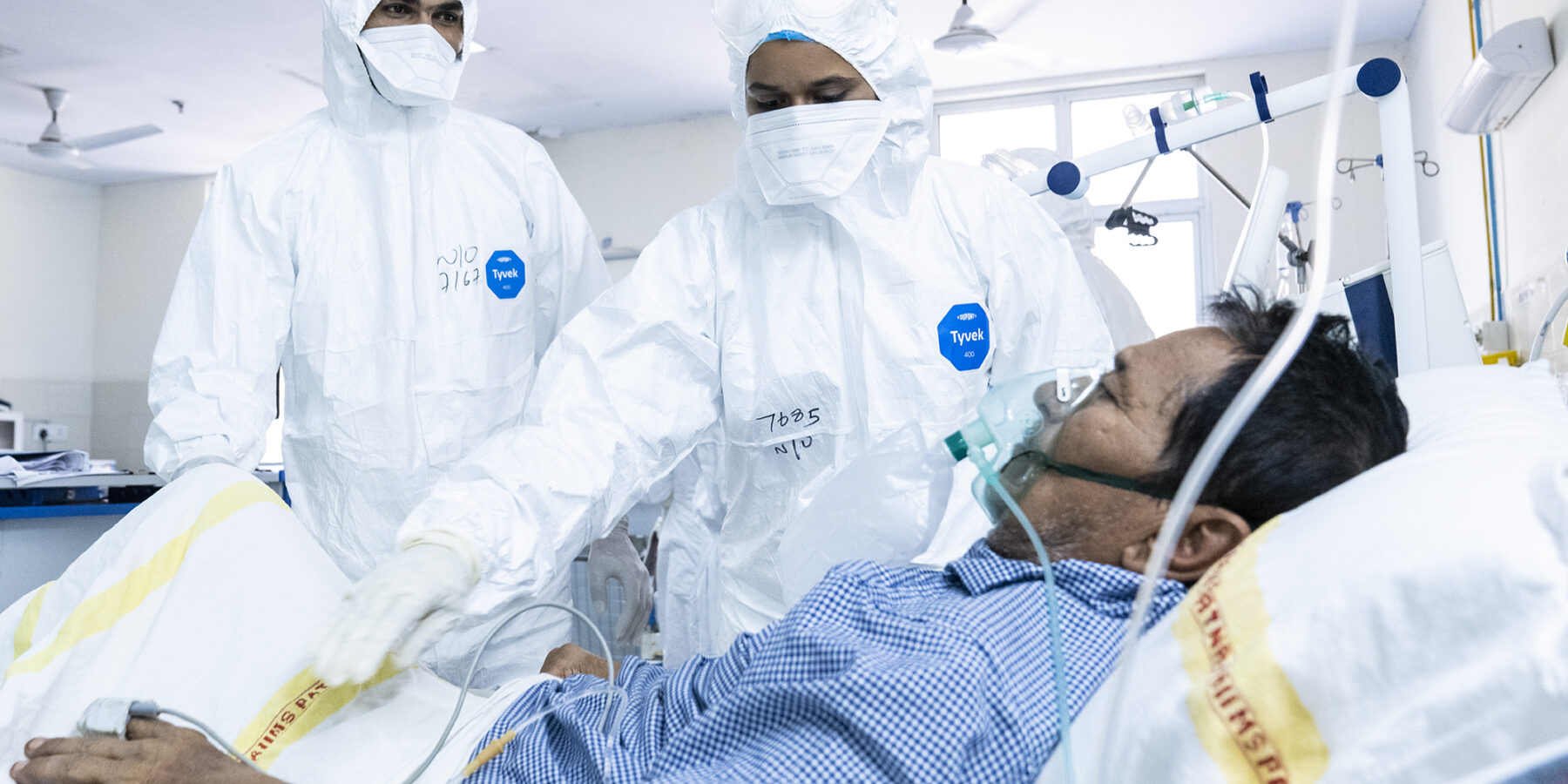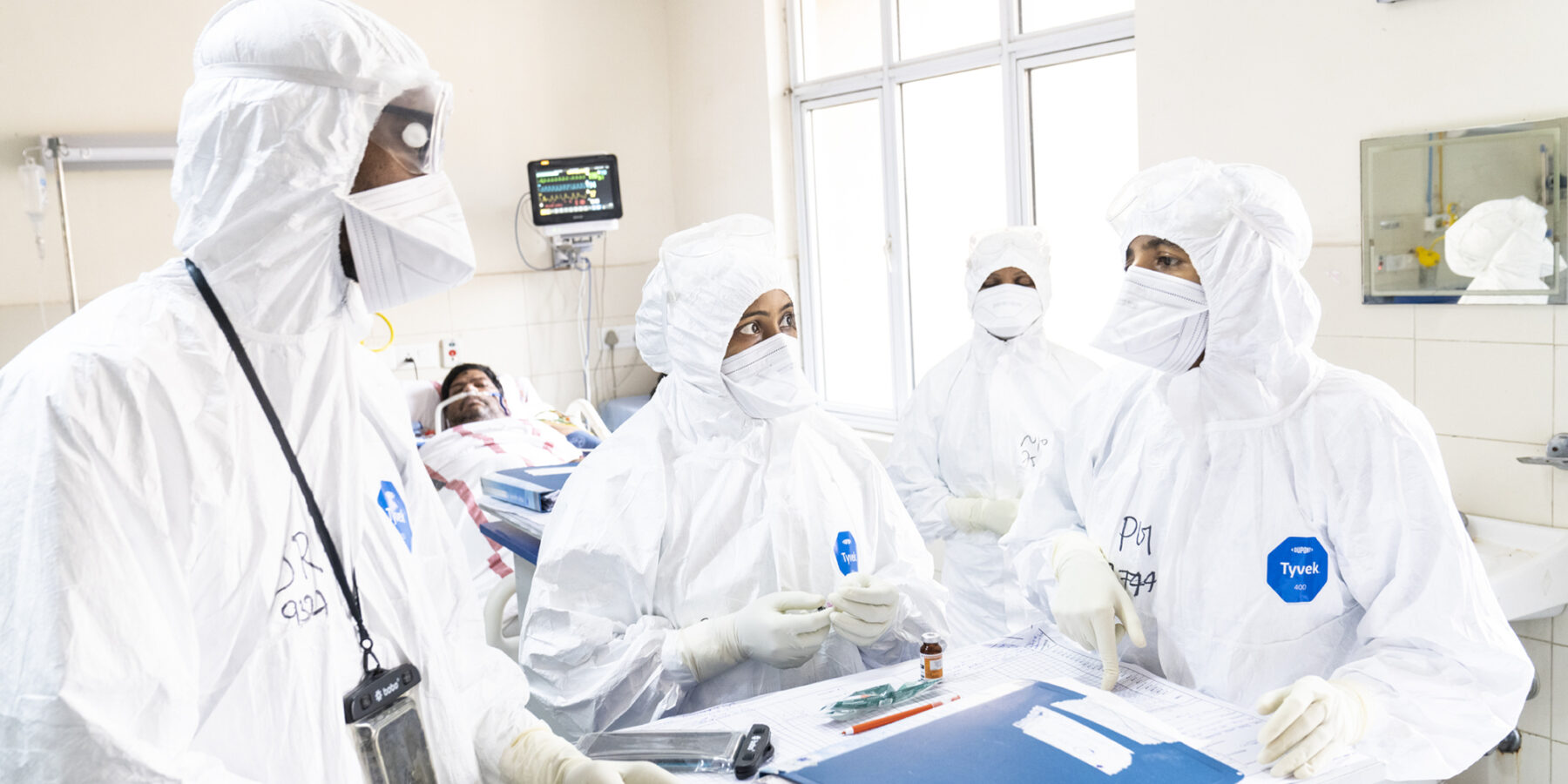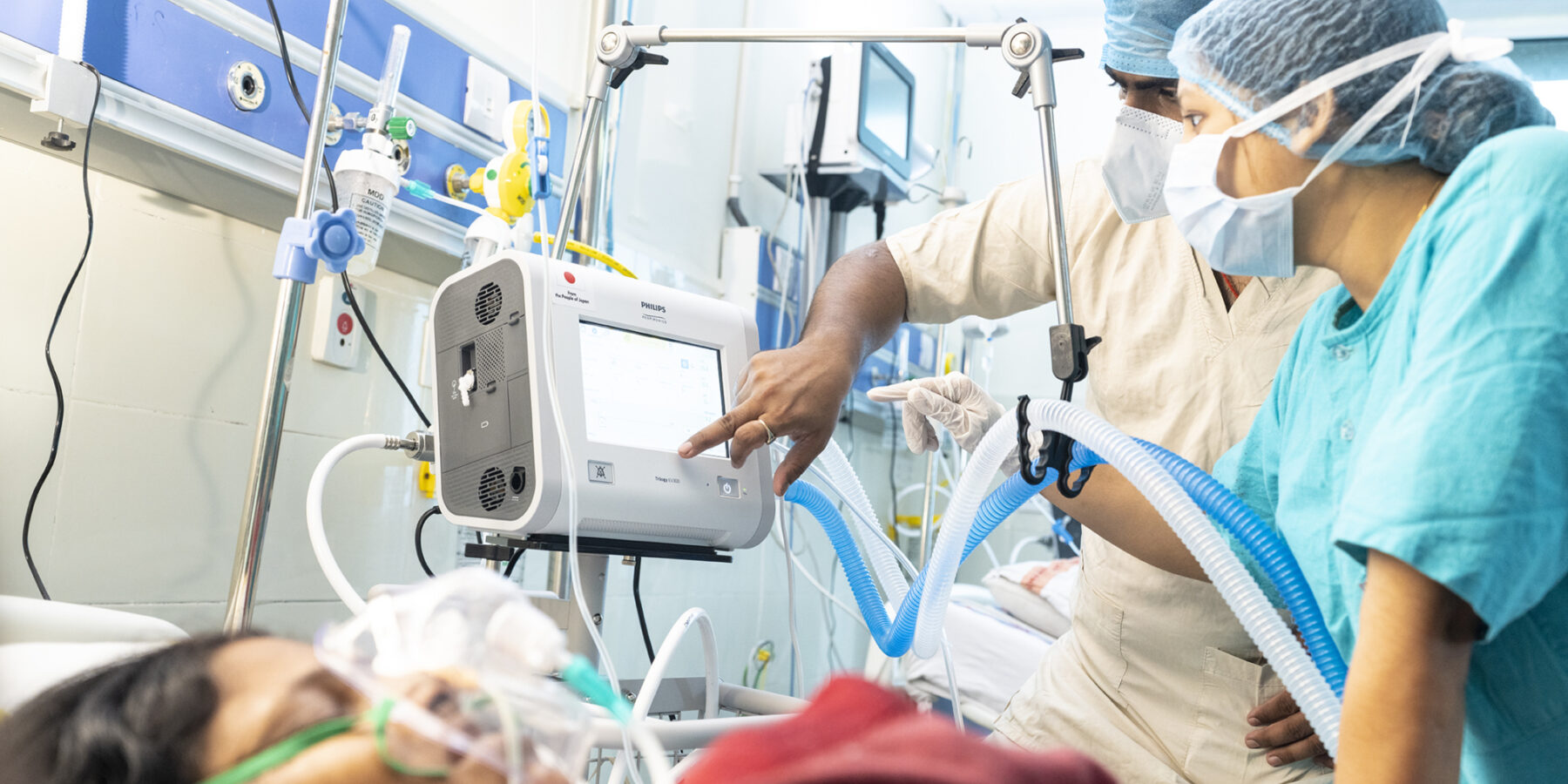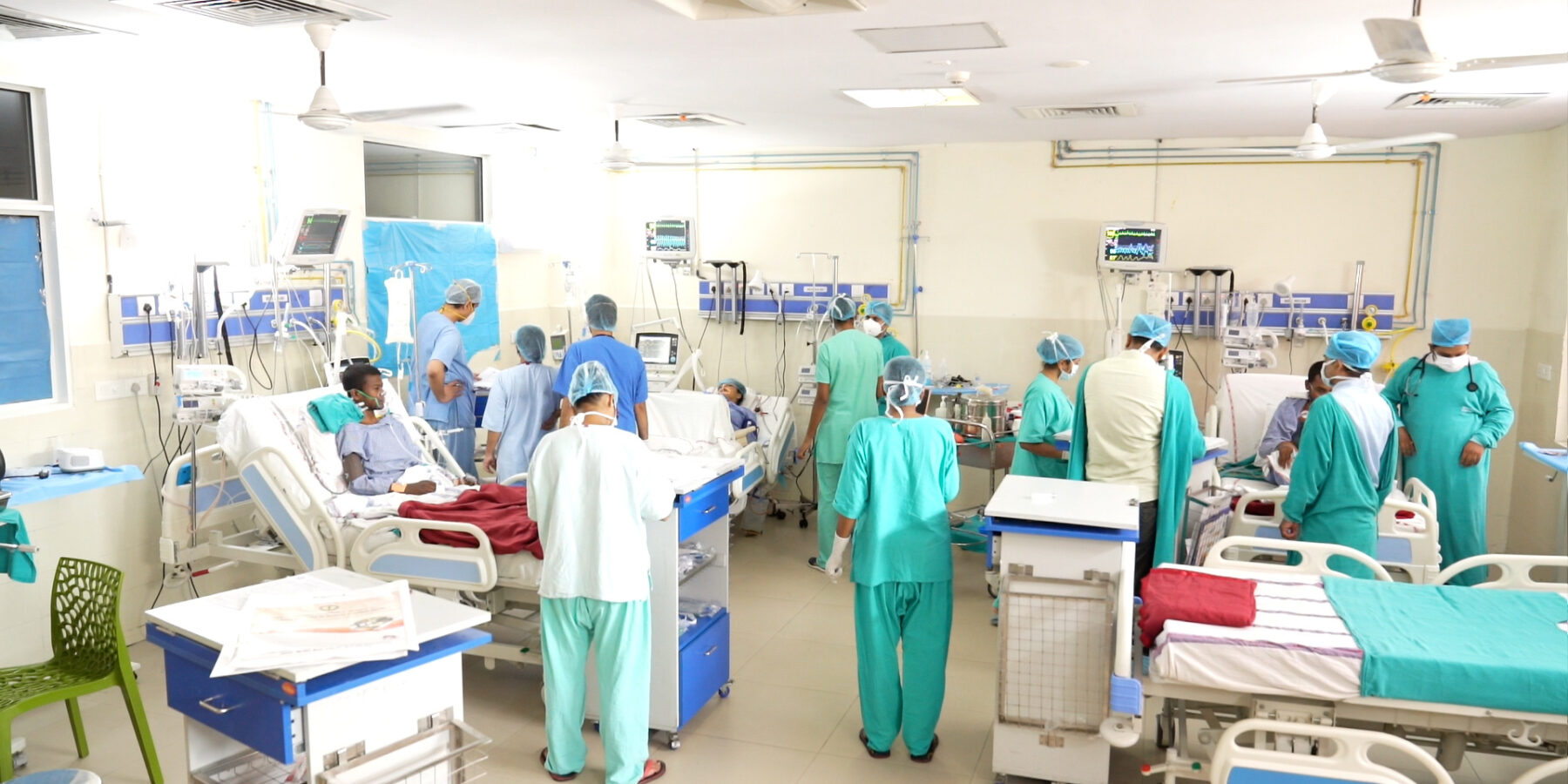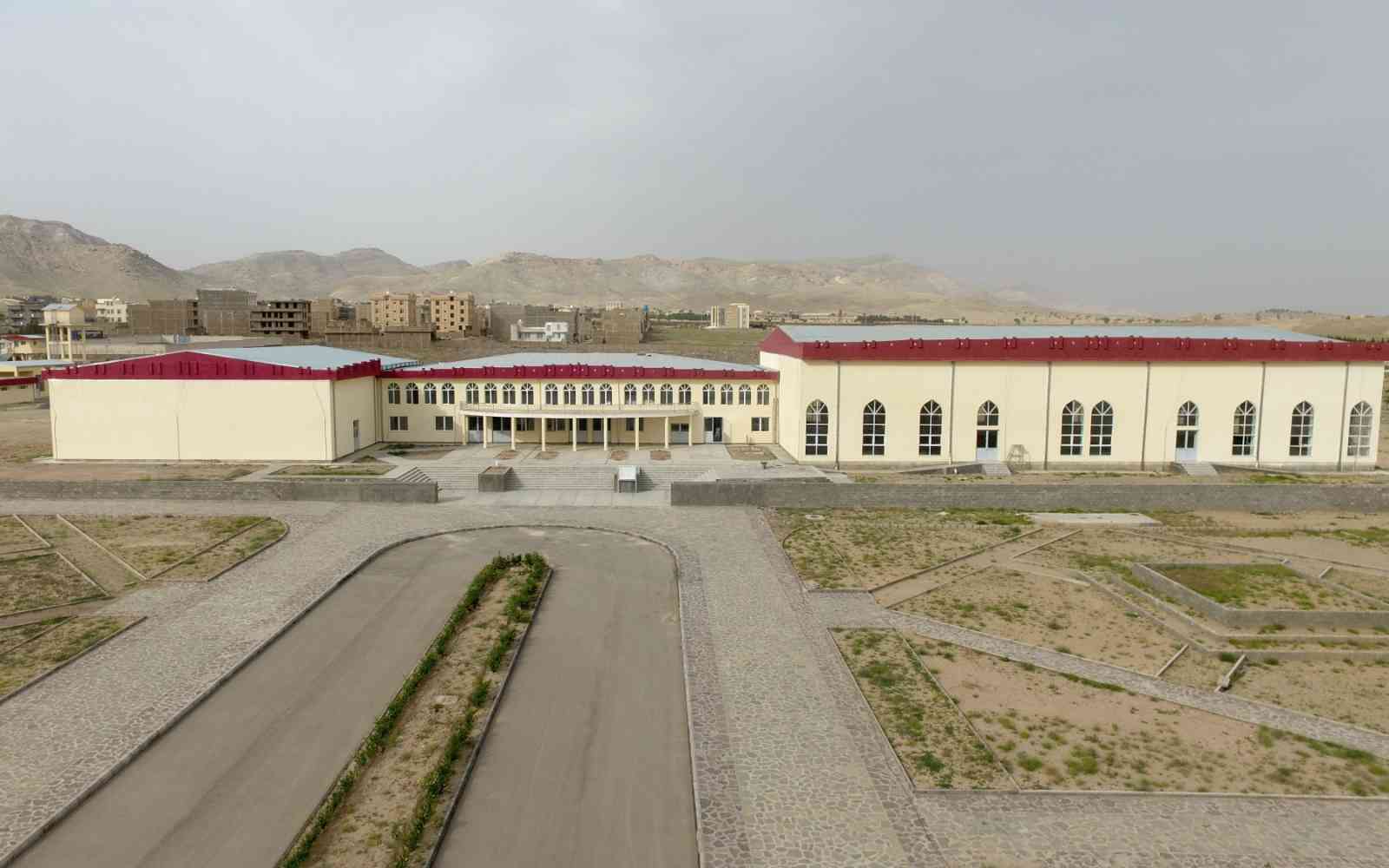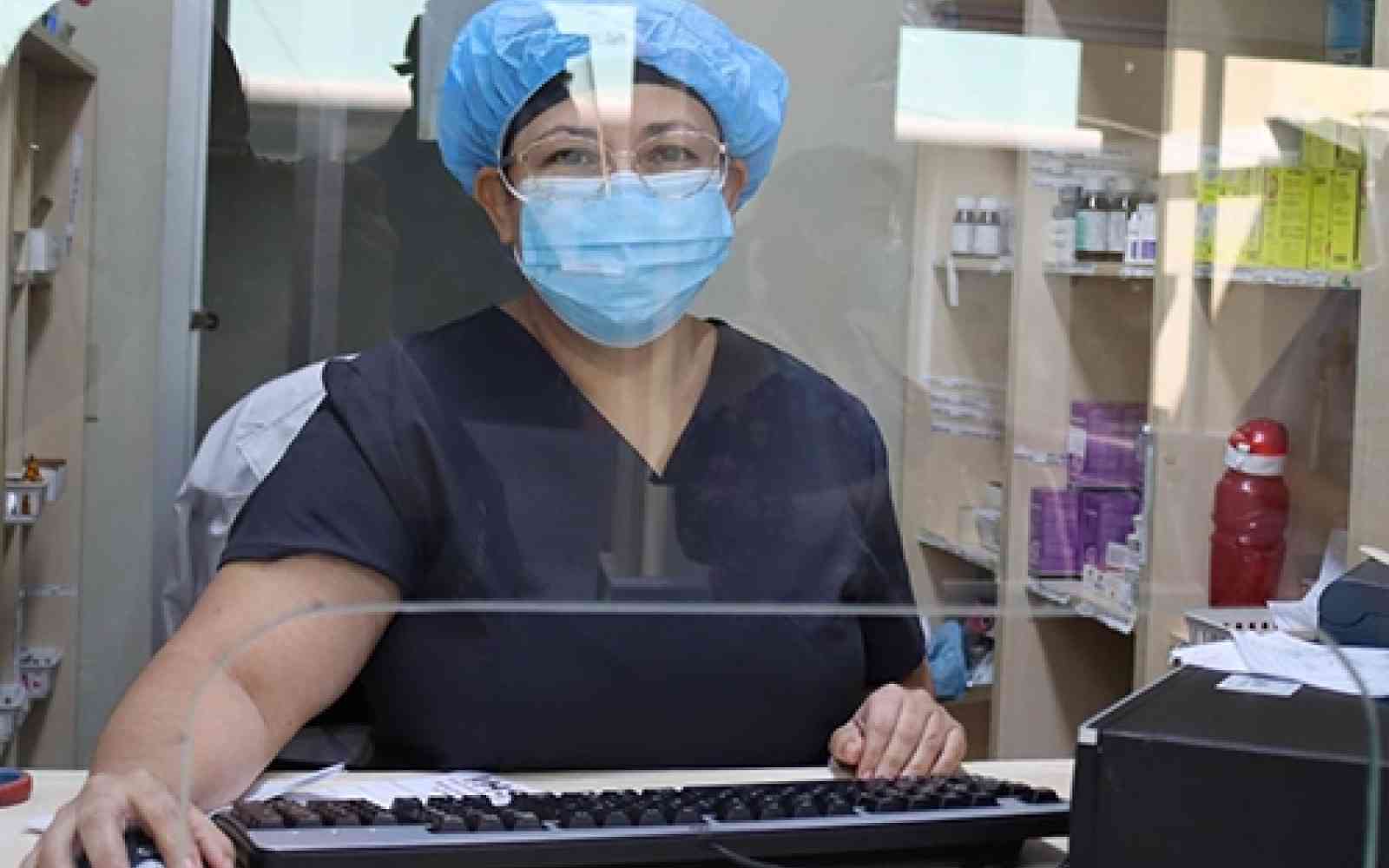COVID on camera: India's crisis
This article was published more than two years ago. Some information may no longer be accurate.
In 2021, a deadly second wave of COVID-19 hit India hard, throwing medical facilities into turmoil as they struggled to meet the unprecedented spike in new cases.
We worked with the government of Japan to bring life-saving equipment to vulnerable people in several parts of the country. From the frontlines, we capture the impact.
At its peak in India, COVID-19 claimed nearly 29,000 lives from the over 400,000 new cases reported each week.
Share this
As thousands of people swarmed hospitals in need of urgent care, facilities quickly became overwhelmed.
Share this
Medical personnel worked difficult hours to care for critically ill COVID-19 patients, as they stretched limited resources to breaking point. One doctor pulled 12-hour shifts, seven days a week, only to respond to emergency phone calls for much of the time he was off duty.
For many people staffing hospitals, challenges were not limited to work but impacted their lives at home as well. With the high numbers, almost no family was left untouched by the disease.
Share this
As the toll mounted, COVID-19 patients soon claimed beds and equipment meant for other patients – with entire hospitals turning into COVID care facilities.
Share this
Apart from personal protective equipment, oxygen and ventilators, vital for the treatment of COVID-19, were in short supply – amid much larger global shortages.
Share this
The situation in India, like most of the world, laid bare vulnerabilities in the medical supply chain, especially during crises. COVID-19 brought issues like high prices, unethical suppliers, limited inventories and manufacturing inefficiencies into sharp focus.
Share this
With millions of families in desperate need of care and medical supply chains disrupted, challenges in sourcing and transporting essential equipment into and within India mounted.
Share this
UNOPS and the government of Japan – long-time partners – joined hands once again, this time to rapidly address some of the shortages in essential medical equipment. The government of Japan pledged 1,800 ventilators and 2,500 oxygen concentrators to the people of India. UNOPS helped make that commitment a reality.
Share this
Working within heavily constricted timetables, UNOPS teams scattered across multiple South Asian countries initiated emergency procurement procedures. These covered everything from sourcing to delivery, amid global flight disruptions.
Share this
In a matter of weeks, UNOPS had sourced the ventilators and oxygen concentrators, transported them into India and delivered them into the hands of the national government. The government, in turn, distributed the equipment to hospitals across the country based on needs.
Share this
Explore further











